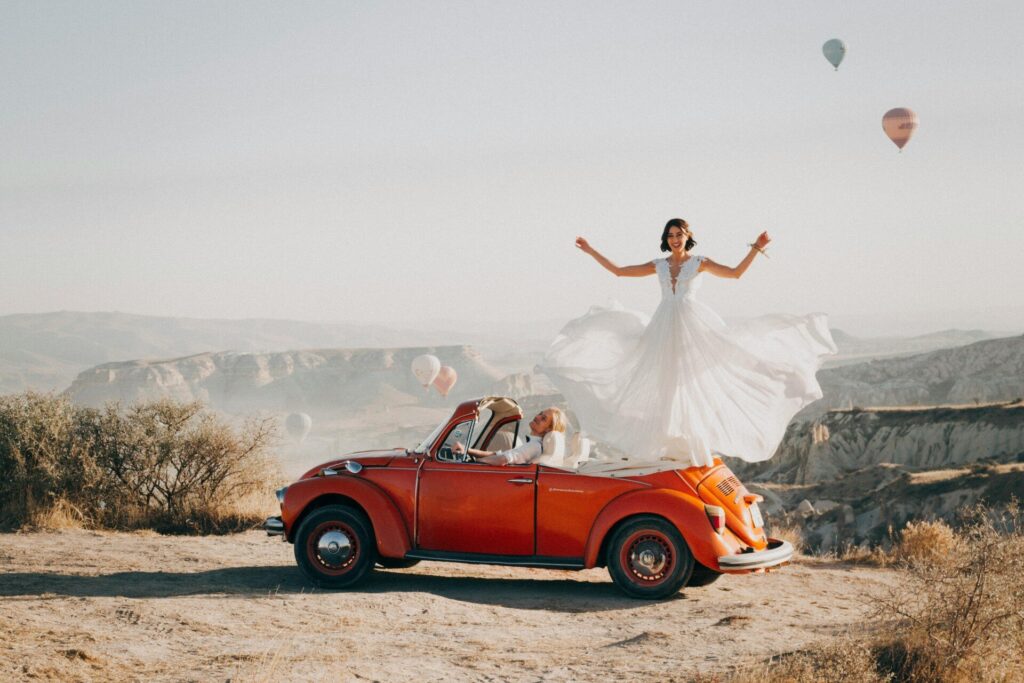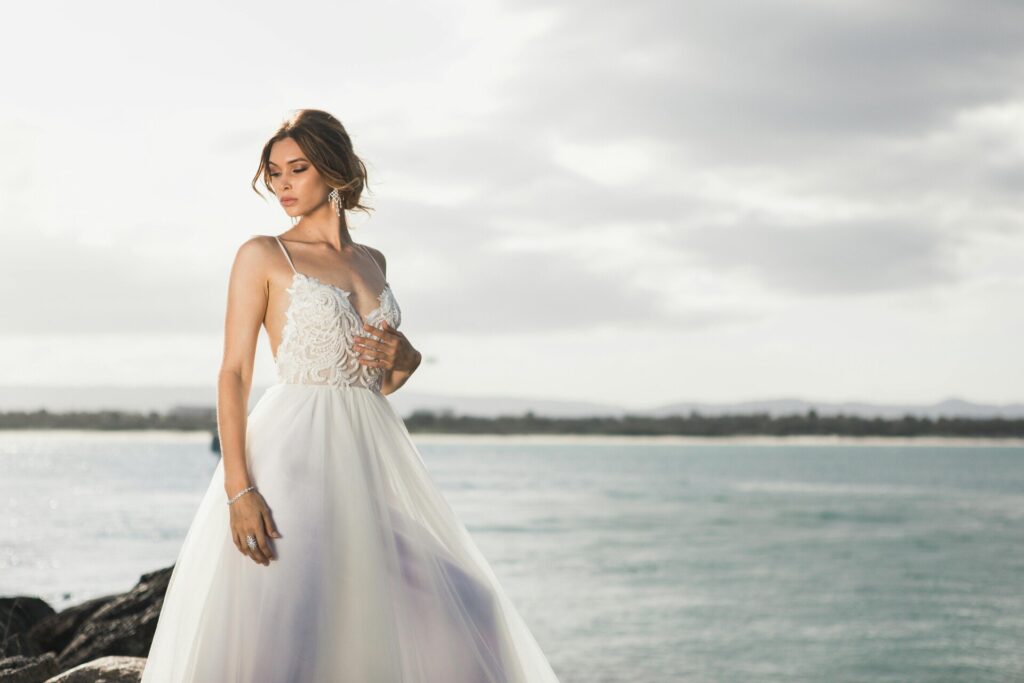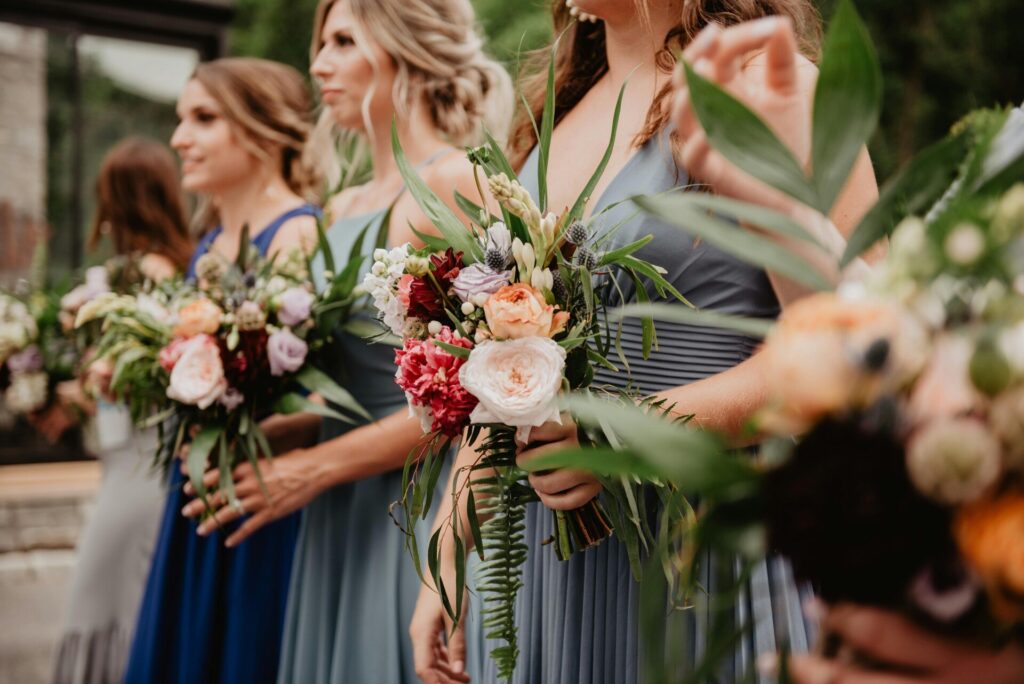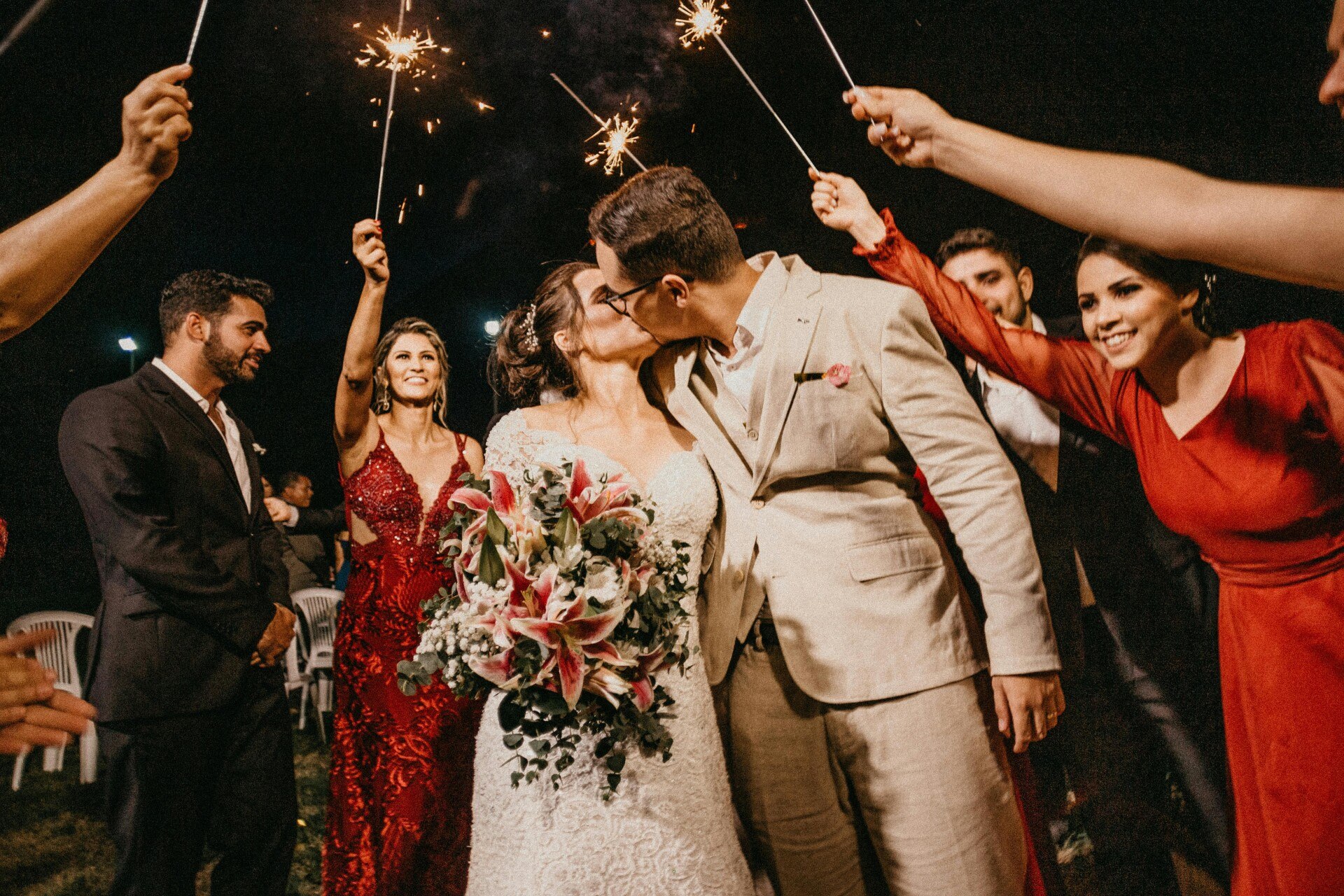The wedding culture in USA feels different from coast to coast. Each place brings its own flavor. A bayou band leads a second line in New Orleans. A cookie table feeds guests all night in Pittsburgh. A lei exchange warms a ceremony in Hawai‘i. These details carry stories about families, seasons, and hometown pride. They also help international couples, expats, and guests from abroad feel closer to the place where the celebration happens. Local history, food, music, and even the weather shape American wedding customs. Forests and farms push parties toward cozy wood barns. Cities invite sleek rooftops, black-tie looks, and late-night slices of pizza. Desert light calls for bright paper flags and mariachi. Beaches ask for bare feet and leis. I see how these choices make vows feel personal and grounded. They are not just pretty. They show respect for the land and the people who live there.
Here I share regional wedding traditions USA couples love, plus ideas and style tips you can borrow. I also point to a few practical notes on Marriage Laws that change by state. That part matters for anyone coming from abroad or planning a destination ceremony. The goal is simple: help you read the local map, find your own path, and plan a celebration that feels true. I keep the language clear and friendly, so you can enjoy the stories and use the advice with ease.
American wedding customs in the South and Gulf Coast: brass bands, bourbon, and coastal vows
Southern parties carry a glow that guests remember for years. In New Orleans, a brass band leads a second line through the streets after the ceremony. The couple waves feathered umbrellas. Guests swing white handkerchiefs and dance behind the band. It turns the walk to the reception into joy on parade. In Baton Rouge and parts of Texas and Mississippi, many brides add a “cake pull”. Silver charms on ribbons hide in the cake. Friends tug the ribbons and pull charms that match a wish, like travel, luck, or love.

Texas brings a famous groom’s cake, often chocolate and playful. Think football teams, cowboy boots, or a favorite flavor. In parts of the Carolinas and Georgia, couples “bury the bourbon” a month before the wedding to invite clear skies. Someone digs up the bottle after vows and shares a toast. On the Gulf, beach ceremonies happen at sunrise or sunset to beat the heat. Guests kick off shoes and feel the sand. A light breeze, soft linen, and seersucker suits fit the mood and the weather. Music shapes the night. Zydeco pumps life into Louisiana receptions. Country two-step fills dance floors in Texas hill country. Lowcountry menus bring shrimp and grits, she-crab soup, and sweet tea. Many families throw a porch party or a backyard boil the night before. That pre-wedding meal sets a warm, easy rhythm for the weekend. It shows how local wedding rituals America keep ties strong between friends, cousins, and neighbors.
Style tips help the plan go smoothly. Fabrics that breathe keep everyone happy. Light gowns, linen shirts, and block heels suit grass or sand. Parasols and hand fans look sweet and help with heat. I also like welcome bags with sunscreen, bug spray, and a small bottle of water or lemonade. These tiny touches say, “We thought of you.” For couples from abroad, small nods to home like a tea sweet from your country or a ribbon in your flag colors sit well beside regional details. That mix shows a kind heart and a steady sense of place.
Regional bridal customs USA in the Northeast and Mid-Atlantic: city polish and seaside comfort
Big-city energy meets cozy coastal life in this region. A rooftop in Manhattan brings a skyline kiss at sunset. A classic hotel in Philadelphia can host a black-tie party with a live band and formal receiving line. New England couples often host clam bakes by the shore or tuck fresh oysters into cocktail hour. Hydrangeas, navy stripes, and boat shoes echo Cape Cod and the islands. In Boston, bagpipers sometimes lead the couple into the reception, a nod to Irish or Scottish roots that run deep across the area.
Maryland weddings love blue crab. Wooden mallets, brown paper, and Old Bay spice turn dinner into a hands-on feast. In New Jersey, shore weddings use beach tags as escort cards and saltwater taffy as favors. Washington, DC brings stately touches. A saber arch by service members blesses the newlyweds, and museums become grand backdrops. In many Northeast cities with large Jewish communities, a glass break under the chuppah invites cheers and a big burst of dance to the hora. Friends lift the couple on chairs while the band speeds up the beat.
Guests expect strong food and a lively after-party. Late-night pizza or soft pretzels keep people dancing. Espresso martinis feel very “city.” Street-style photos add edge and fun. Cobblestones, brownstones, subway entrances, and yellow cabs turn quick portraits into mini love films. I also see more weekday weddings in this region due to venue demand, which opens up elegant restaurants and private clubs that feel refined yet warm. Legal prep counts too. Marriage Laws change by state and even by city. Some places ask for a waiting period. Some do not. Officiants and witnesses follow different rules. I keep a simple check-list for couples who plan a ceremony here or fly in for a destination date:
- License timing: check waiting period and expiration window in the county where you will marry.
- Officiant rules: confirm if a friend can get a one-day license or if a clergy or judge is needed.
- Witnesses: some states ask for one, others for two; plan who will sign.
- Name change steps: ask how the certificate lists names and what your home country will accept.
- Holiday weekends: city offices may close; apply early to avoid stress.

That small bit of planning makes everything easier for couples and guests from overseas. It also keeps the focus on the celebration, not the paperwork.
Marriage traditions by state across the Midwest and Great Lakes: barns, polka, and cookie tables
The Midwest tells love stories through comfort food, community halls, and long dances under string lights. Wisconsin and parts of Minnesota fill dance floors with polka. Bands keep the tempo up, and even shy guests try a turn. Western Pennsylvania and parts of Ohio bring the famous cookie table. Families bake dozens of recipes and stack trays high. Guests fill take-home boxes late at night. It is sweet, generous, and very local. Chicago weddings add skyline photos by the lake and late-night hot dogs that vanish in minutes.
Farms and barns set the scene across Iowa, Michigan, and Indiana. Hay bales, wildflowers, and big timber beams feel cozy and real. Michigan couples sometimes serve cherry pies or cherry cocktails, a nod to the fruit belt near Traverse City. In Minnesota and the Dakotas, winter weddings glow with candlelight and warm drinks. Summer days stretch long on the Great Lakes, so outdoor ceremonies can run later with golden light on the water. Many couples rent trolleys or buses to move guests between church and barn. That keeps everyone together and cuts down on driving. Music and family ties guide the flow. A money dance appears in some Polish, German, or Italian families. Guests pin bills to the bride’s sash or place money in a satin bag for a quick dance with the couple. Some parties pass a “grand march,” a long line dance that winds through the room. Kids join in, and grandparents laugh in step. This is where traditional American weddings shine: simple fun, long tables, and shared desserts that taste like childhood.
Practical notes help the plan. Outdoor spaces need a rain plan. Flat shoes or boots work better on grass floors. A shuttle keeps the night safe for guests who enjoy a local beer or two. I also point couples to county rules for city parks or lakeshore photos. Small permits protect your timeline. A neat touch is a hot cocoa or coffee bar for cool nights. It keeps guests warm and stretches the dance by an hour or more. These little touches make unique US marriage practices feel easy, honest, and full of heart.
| Region | Local wedding rituals America | Style cue | Best season |
|---|---|---|---|
| South & Gulf Coast | Second line, cake pulls, groom’s cake | Linen, fans, seersucker | Spring, fall |
| Northeast & Mid-Atlantic | Clam bakes, bagpipers, saber arch | Navy, hydrangea, black tie | Late spring, early fall |
| Midwest & Great Lakes | Polka, cookie table, barn receptions | Boots, wildflowers, trolleys | Summer, early fall |
| Southwest & Borderlands | Mariachi, lazo, arras, papel picado | Terracotta, turquoise, bright paper | Fall, spring |
| West Coast & Pacific | Lei exchange, coastal vows, vineyard dinners | Loose waves, local wine, ferns | Late spring, summer |
| Rockies & Alaska | Ski-lift photos, unity beer, midnight sun | Wool wraps, boots, lanterns | Summer; winter for snow |
Wedding ceremony styles USA in the Southwest and Borderlands: desert light and fiesta color

Desert weddings feel bold and tender at the same time. Sunsets wash the sky pink and gold. Cacti shape the horizon. In Arizona and New Mexico, mariachi music steps into the courtyard as guests gather. The trumpet calls people to the dance floor in seconds. Bright papel picado banners flutter above farm tables. Handmade tiles show up on bars, seating charts, and even cake stands. The colors sing against the sand and stone.
Couples with Mexican roots may use a lazo and arras in the ceremony. The lazo, often a floral rope or rosary, wraps around the couple in a figure to show unity. The arras, a set of coins, passes from one partner to the other as a promise to share and care. These customs carry faith, trust, and family history. In South Texas, a ranch setting brings two-step dancing, barbecue, and long starry nights. San Antonio weddings often include a papel picado backdrop and pan dulce for dessert. Tucson and Santa Fe add adobe courtyards, turquoise touches, and chile-themed favors. Respect sits at the center of any plan that borrows from the Southwest. Native communities hold deep ties to this land. If you or your partner come from a Native family, a blanket ceremony, cedar blessing, or drum song may feel right. If not, a kind path is to honor regional art, landscape, and food without using items that belong to sacred practice. Local flowers, clay pottery, and regional spices speak just as clearly.
Heat and terrain shape the schedule. Sunset ceremonies save guests from high noon. Water stations, frozen paletas, straw hats, and parasols make comfort a priority. Terracotta, sage, and turquoise look beautiful in photos. Boots or low heels help on gravel or sand. Candlelight glows against adobe walls, so simple pillar candles and lanterns go a long way. These choices keep the focus on joy while honoring state-specific wedding traditions that matter to families across the borderlands.

